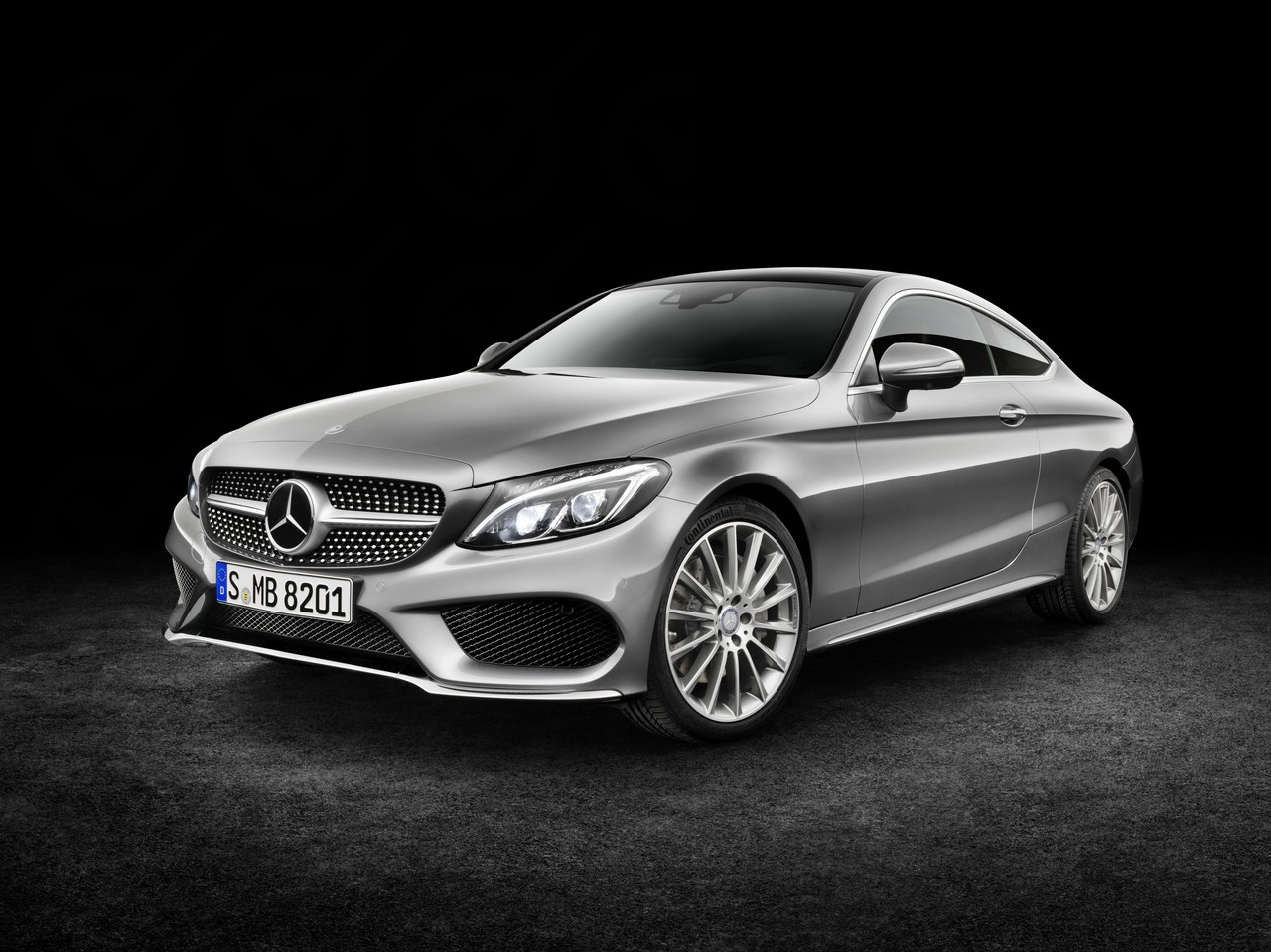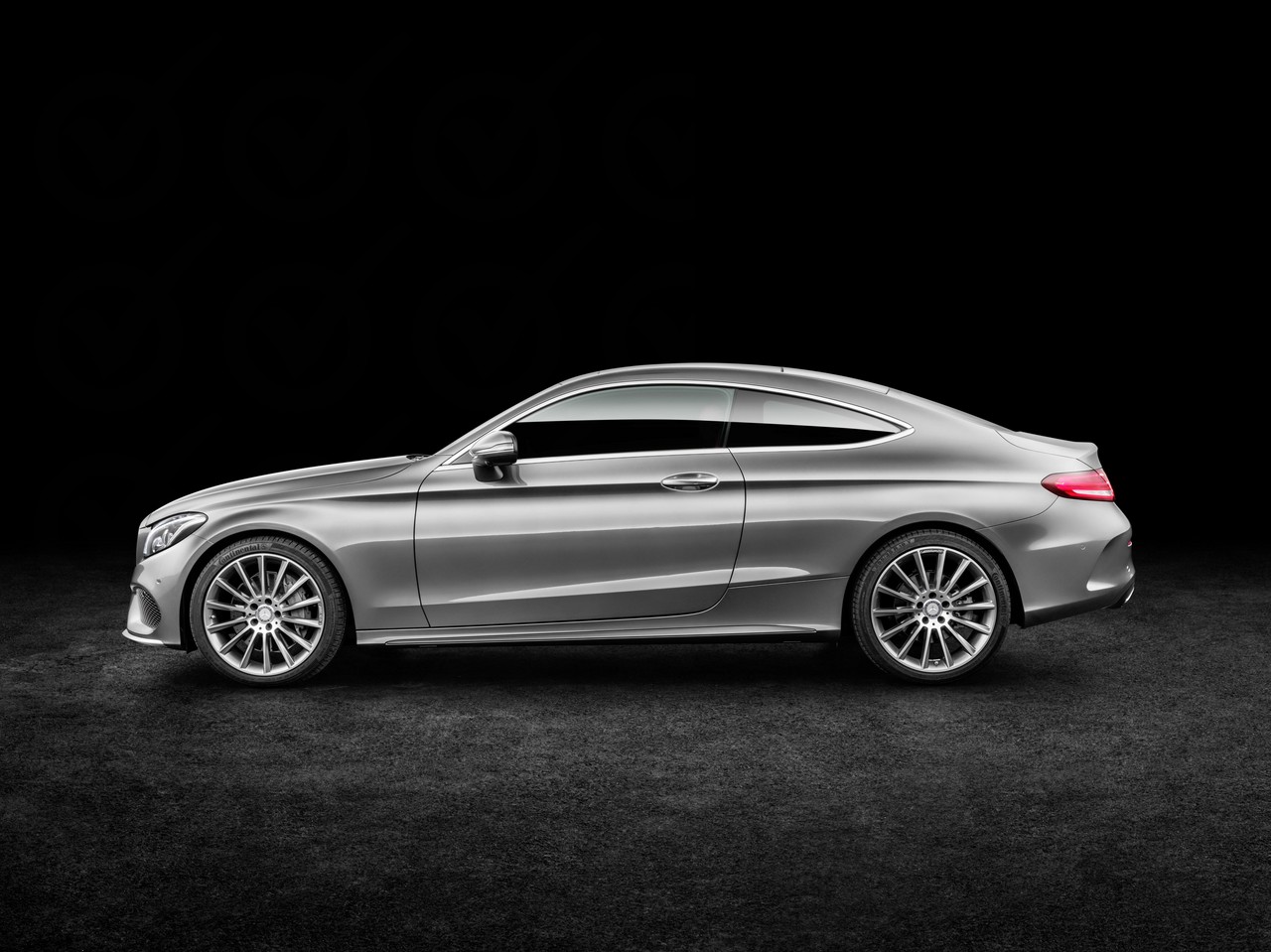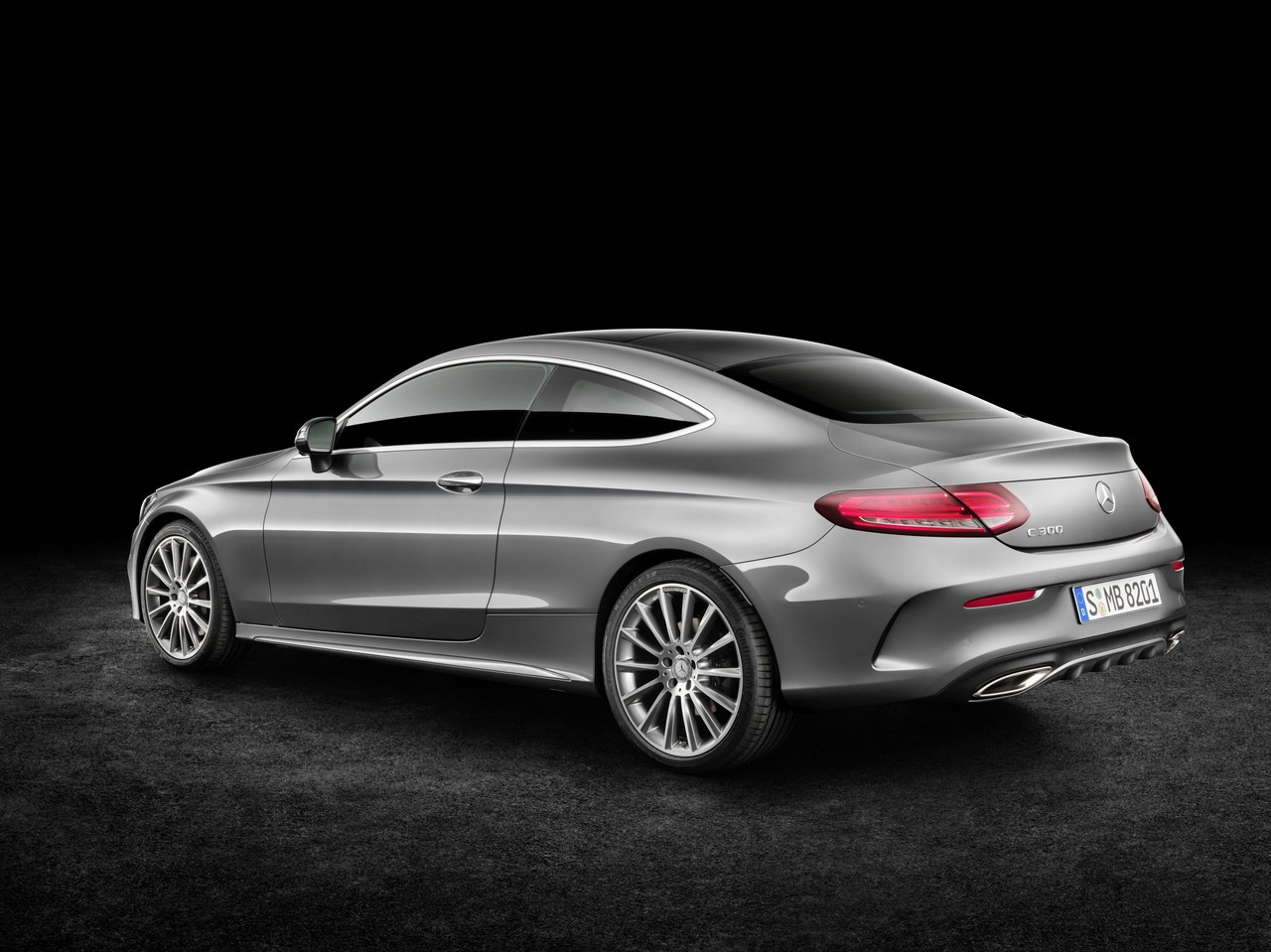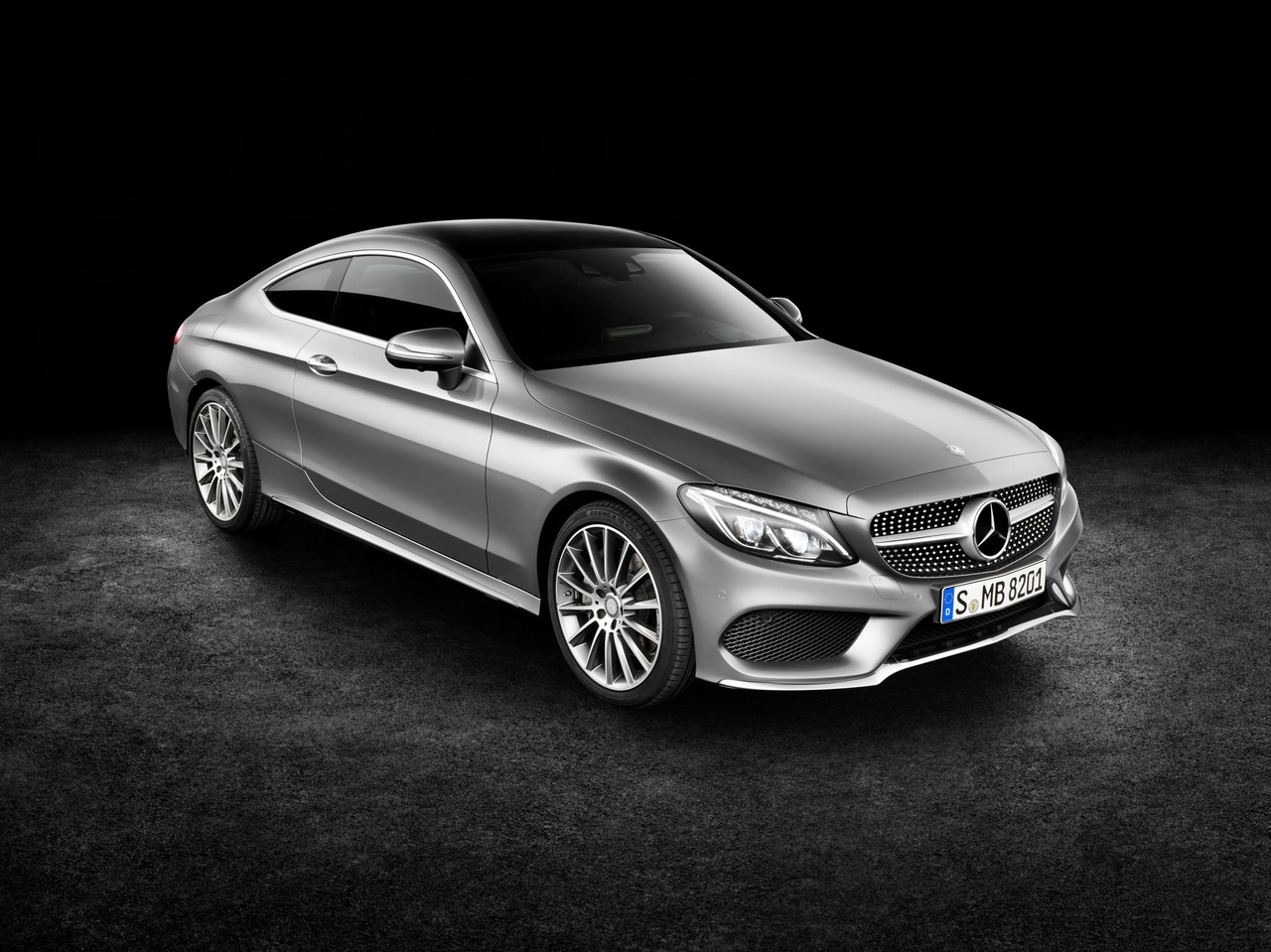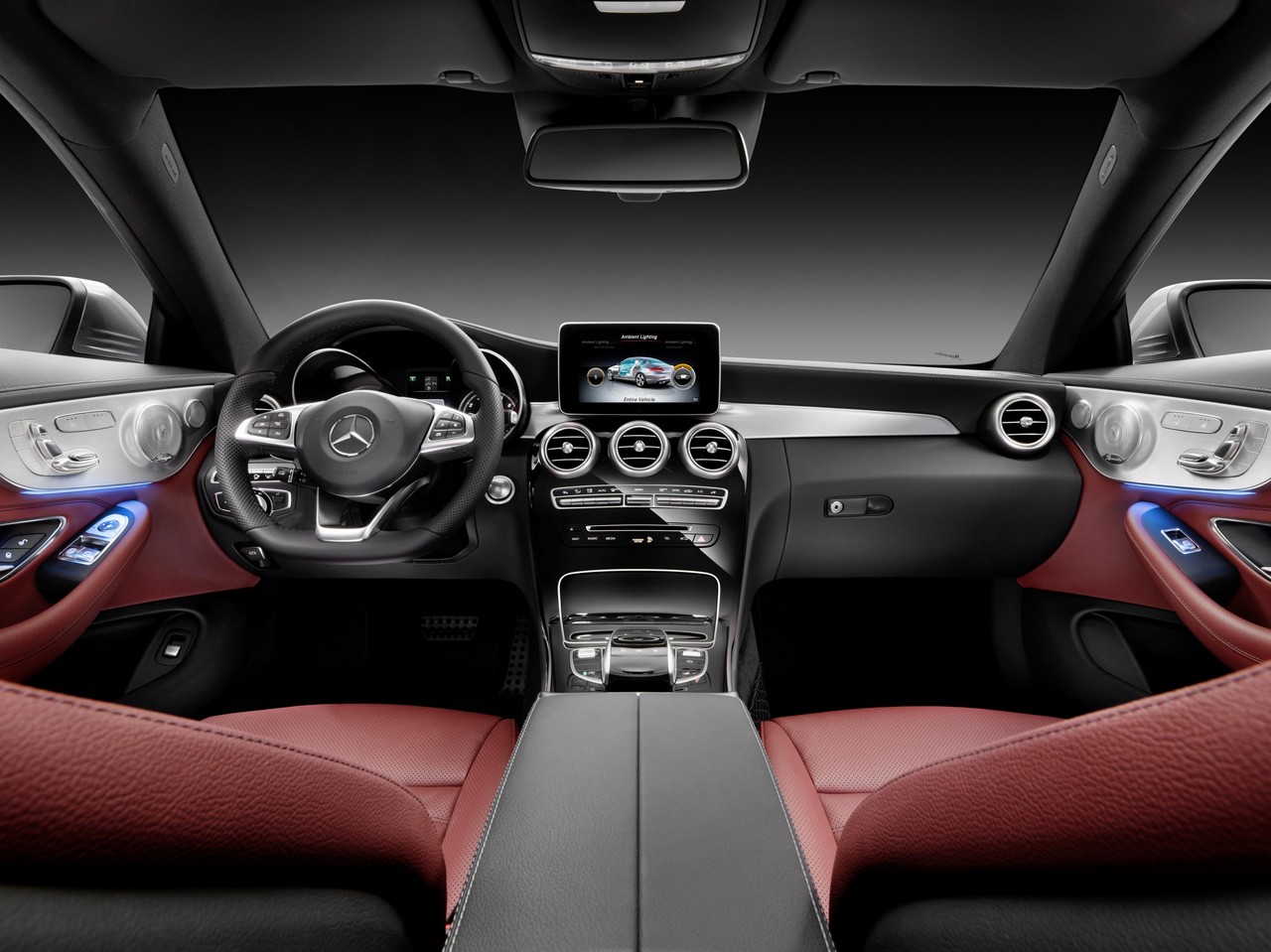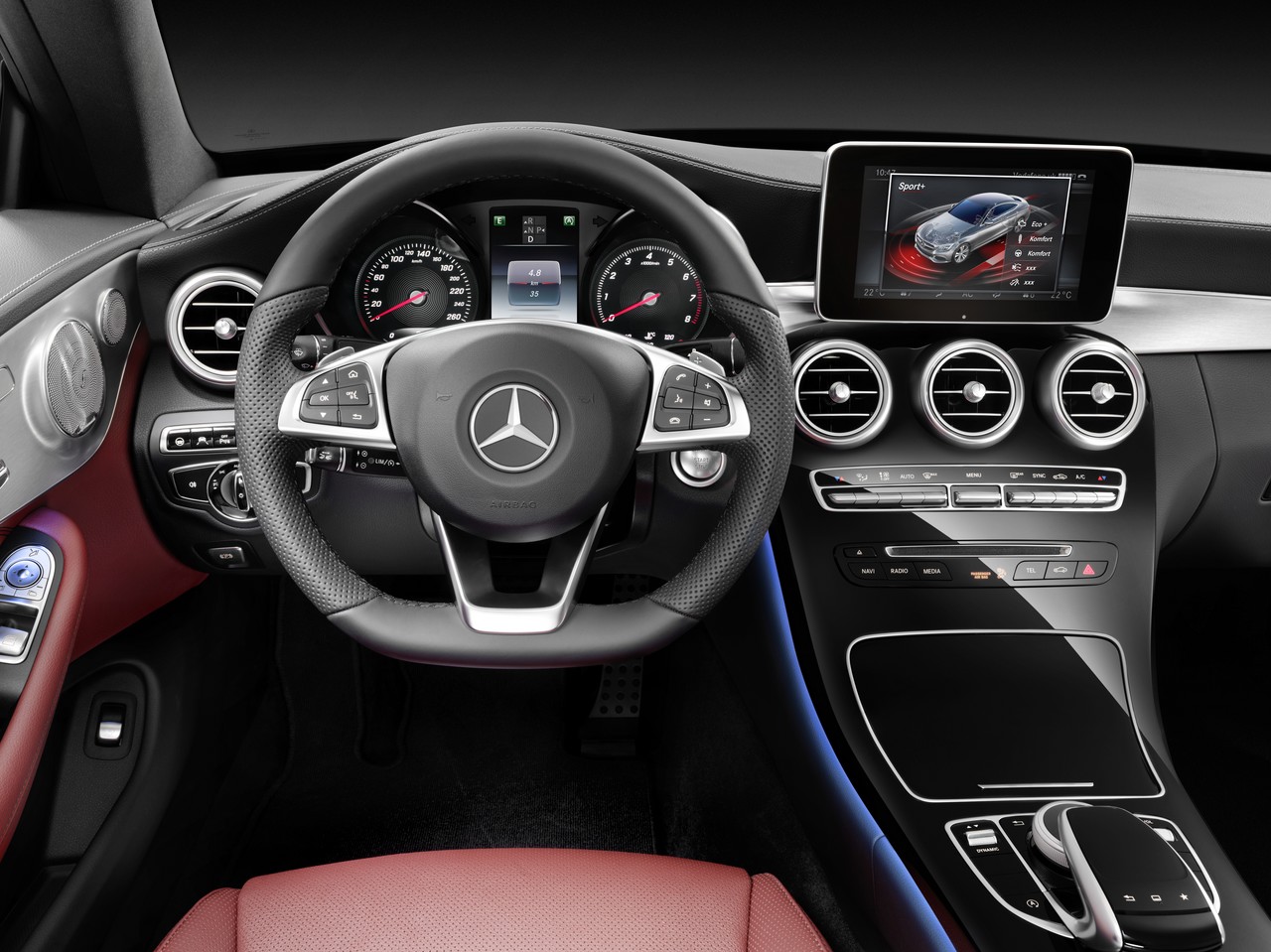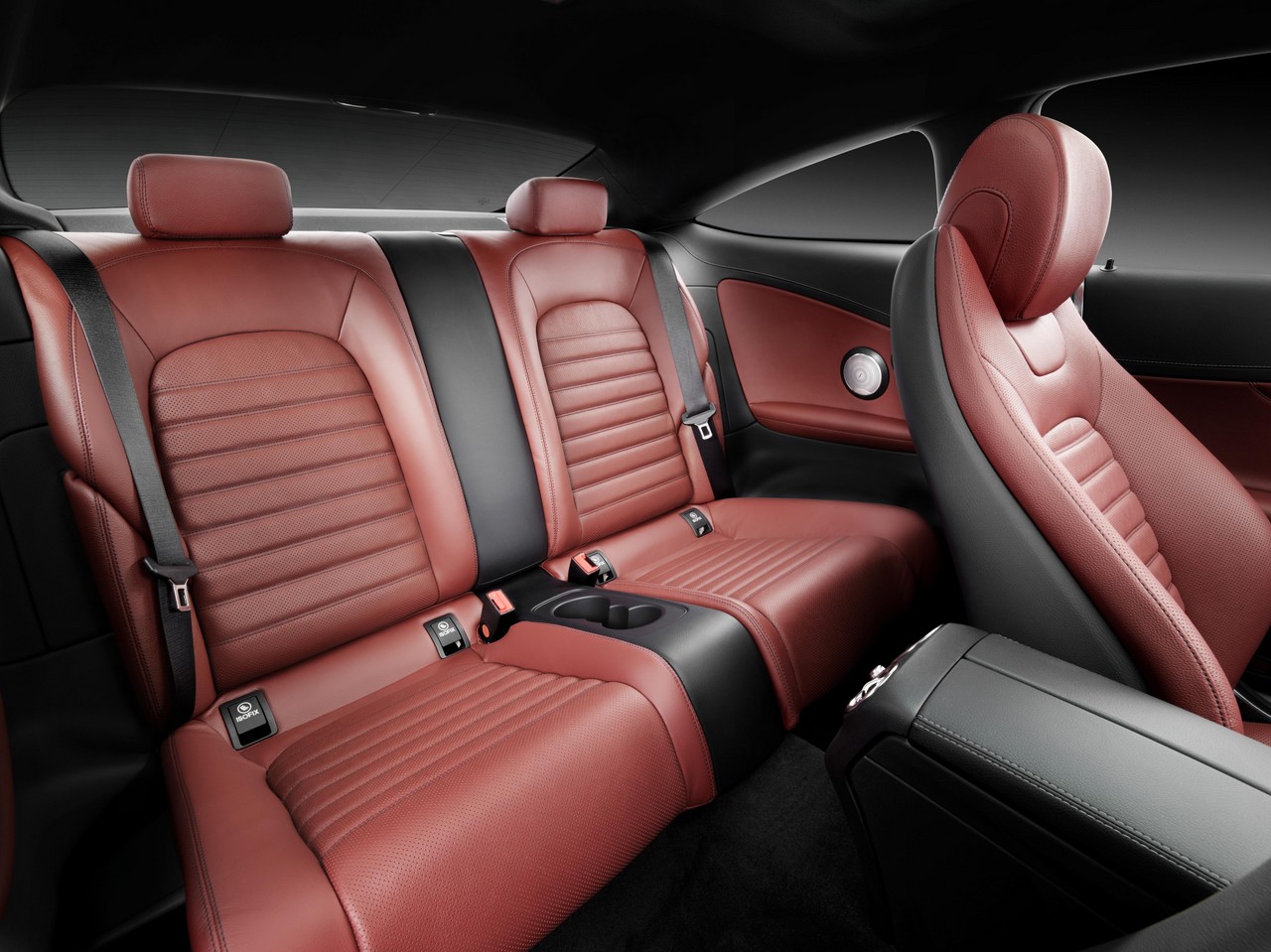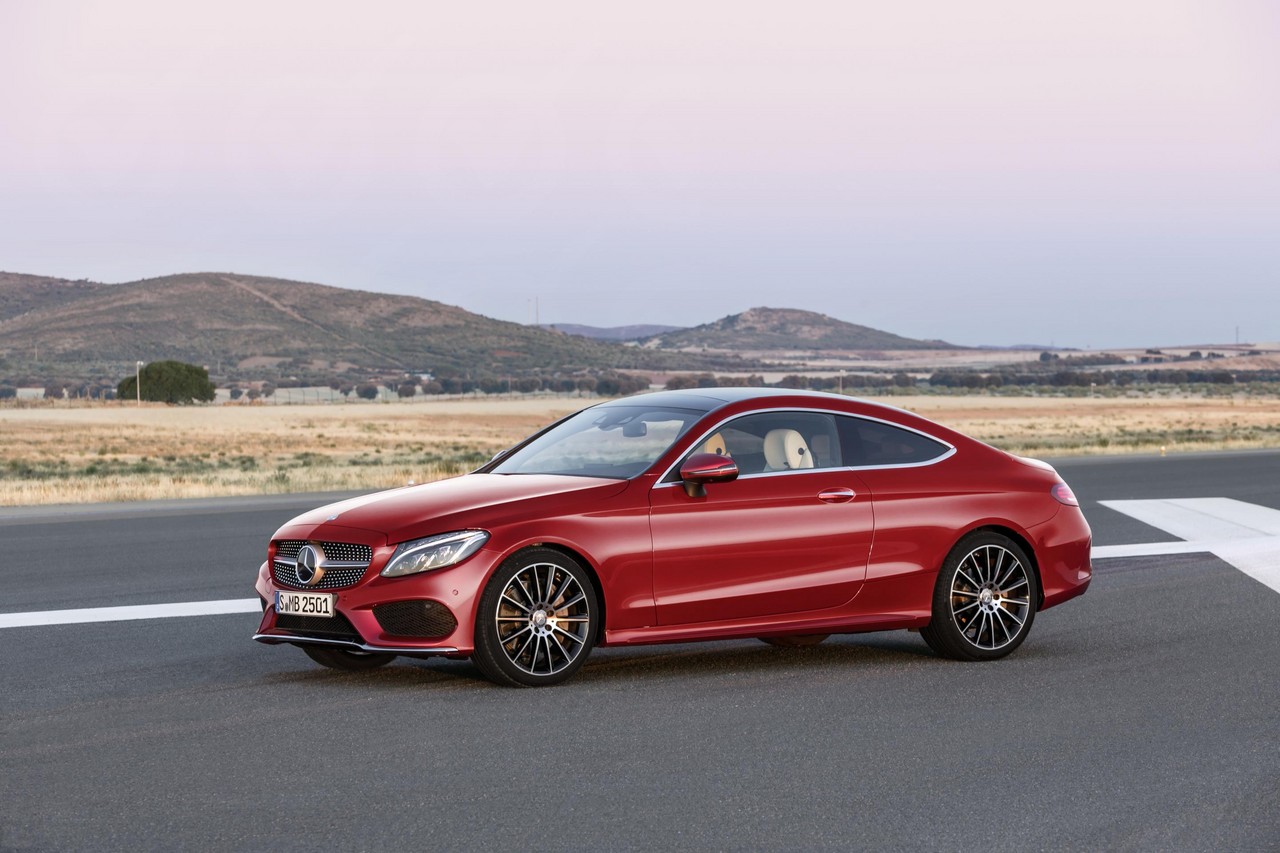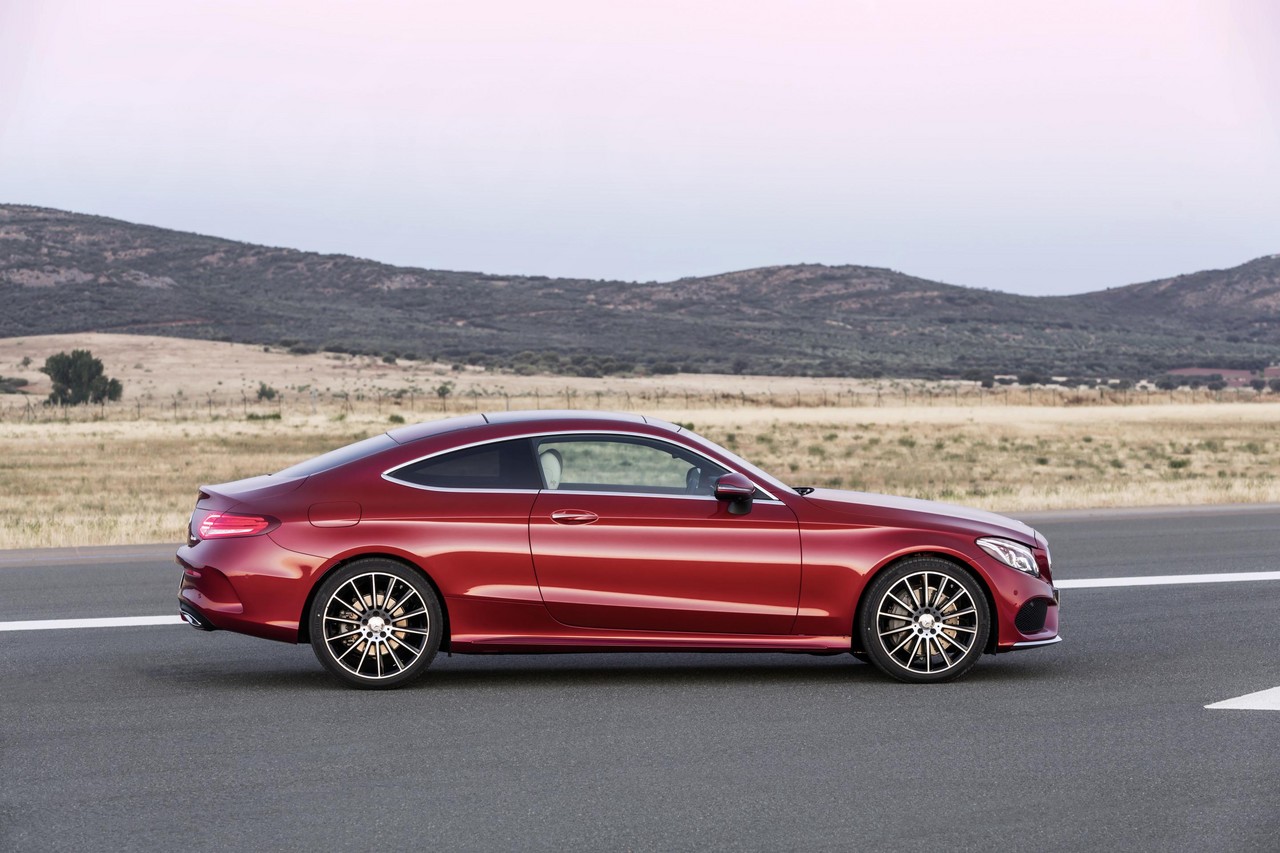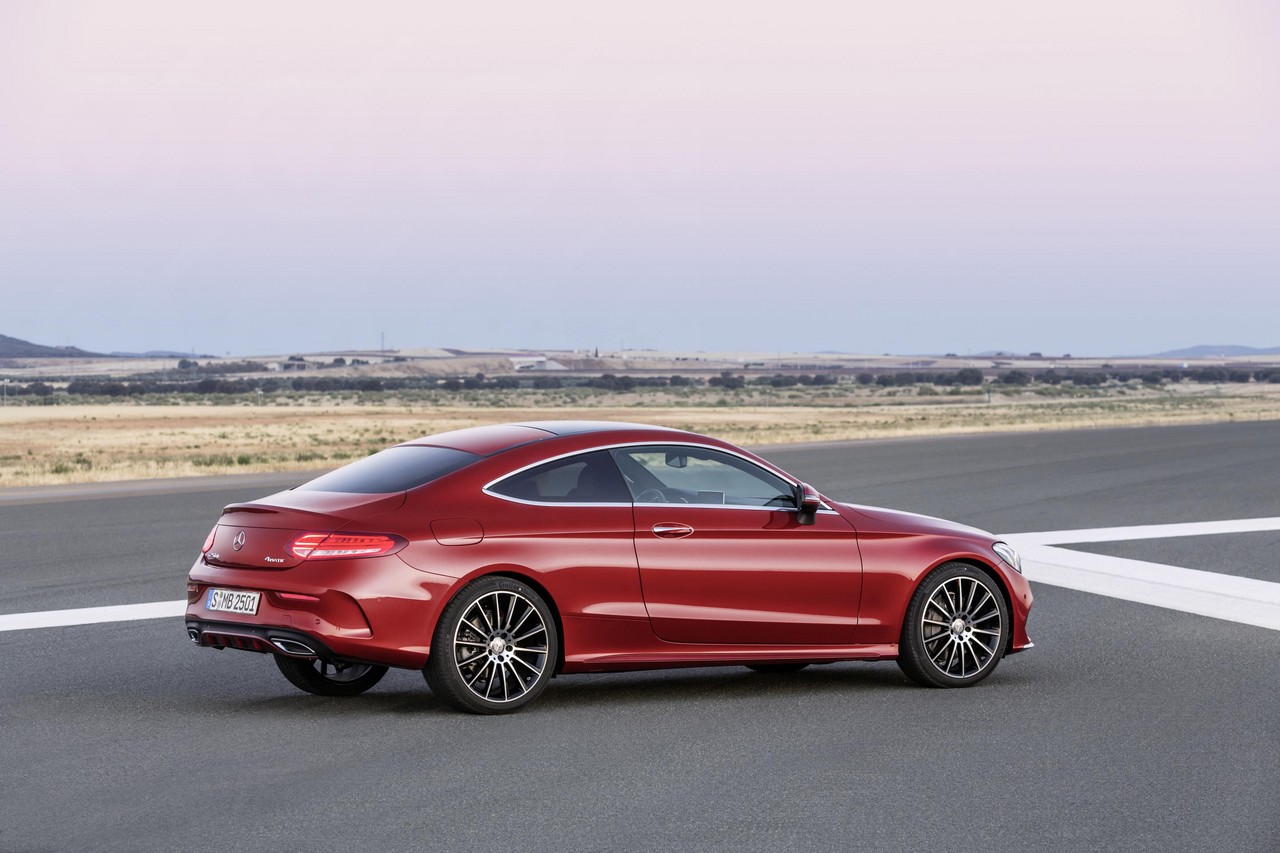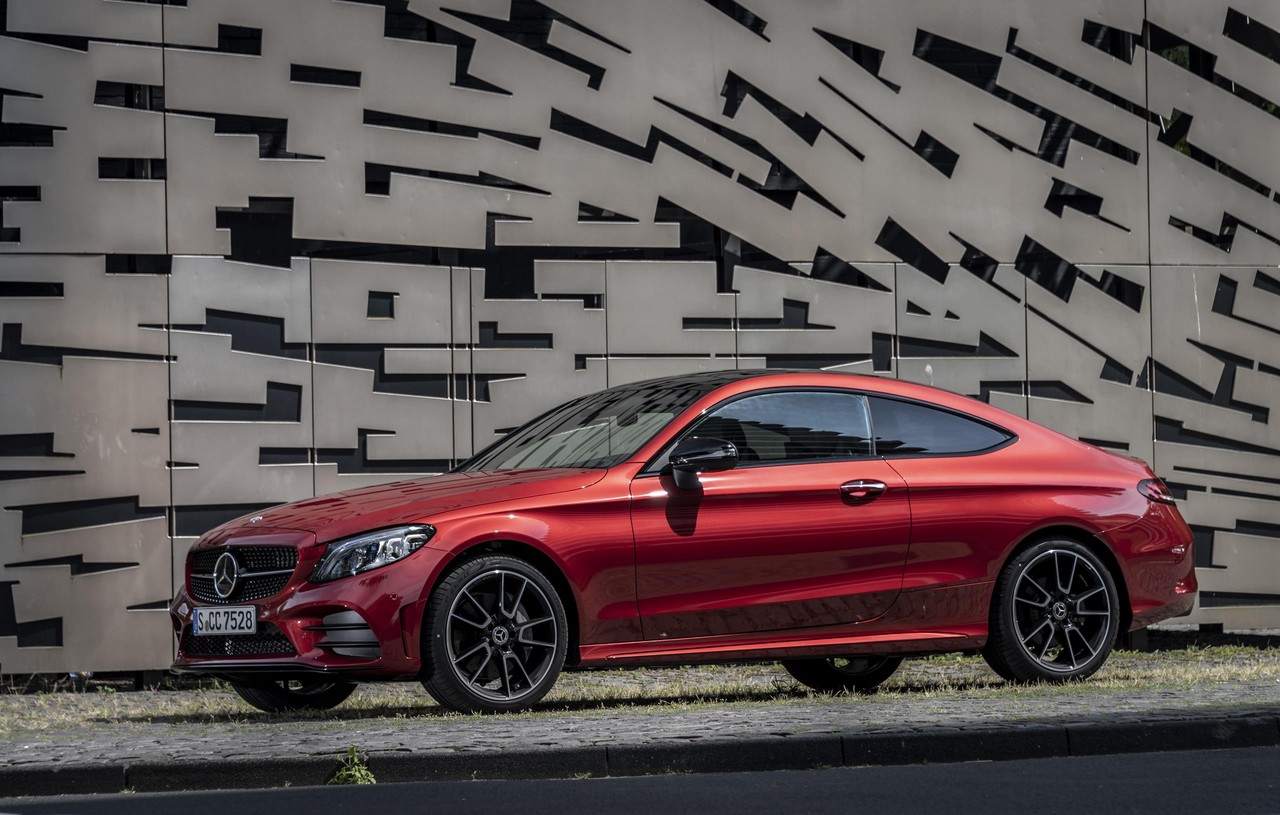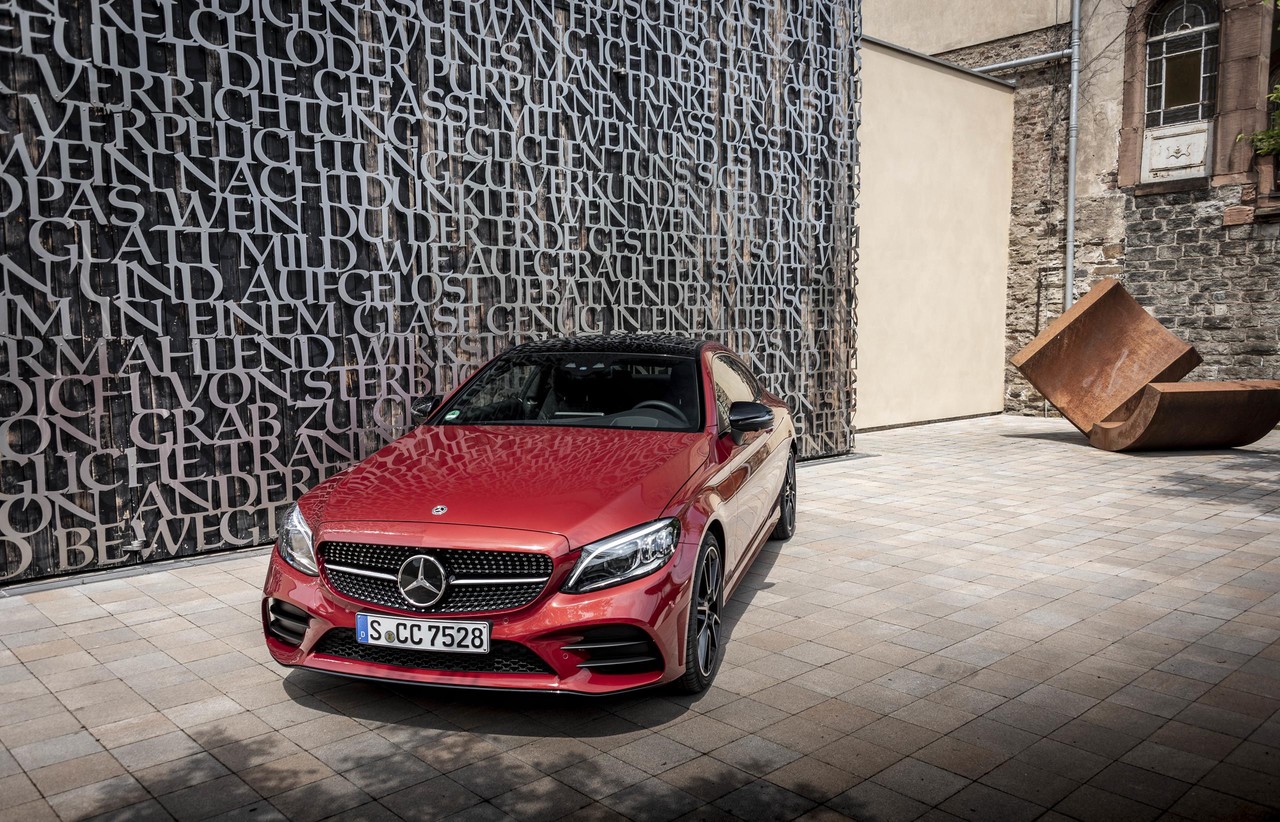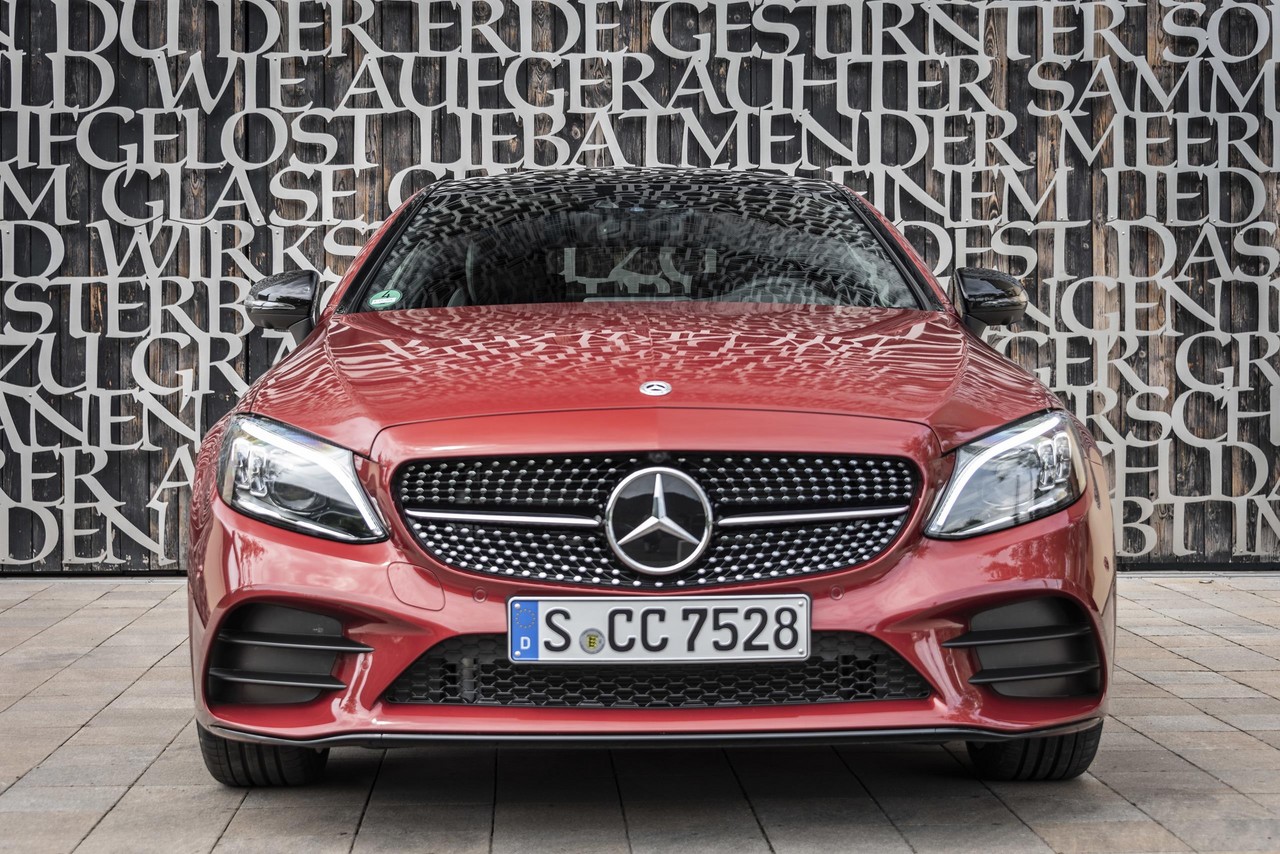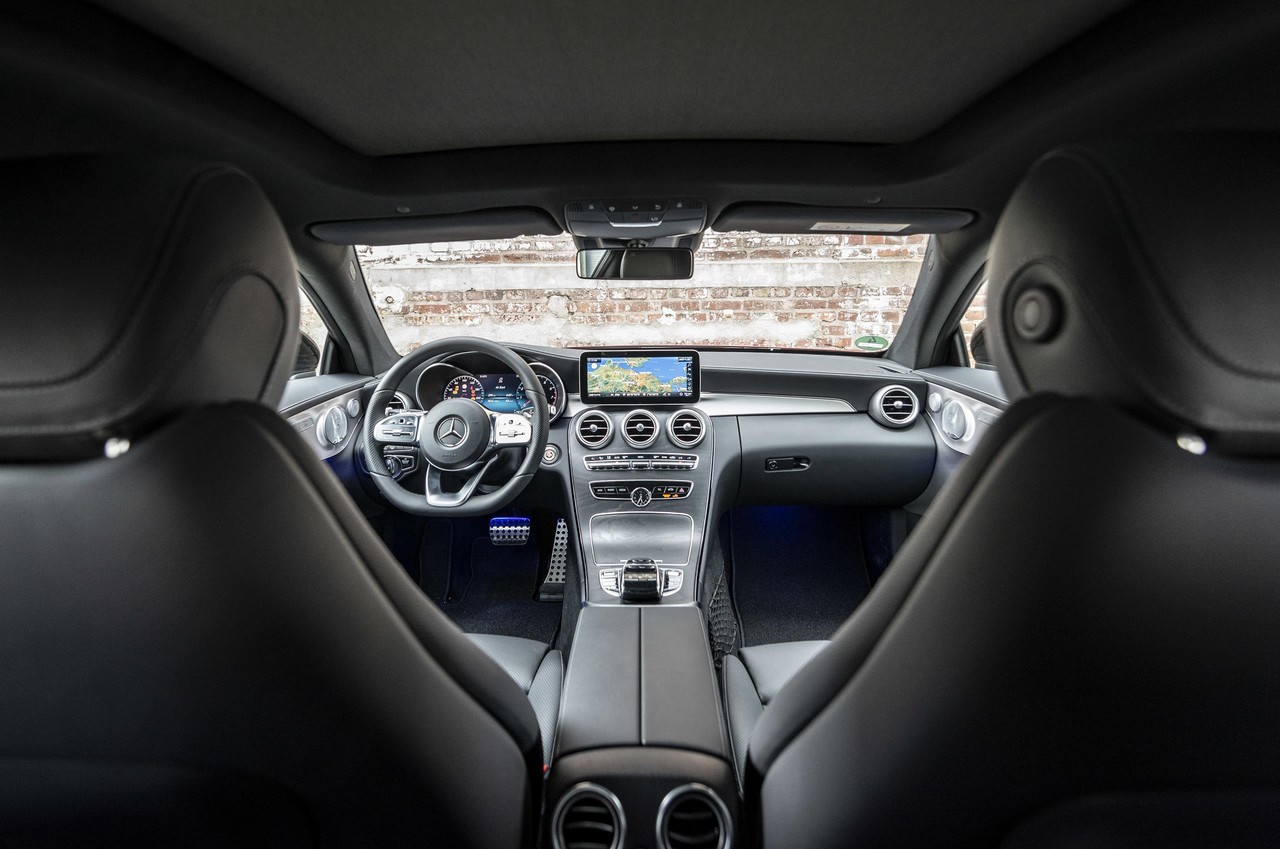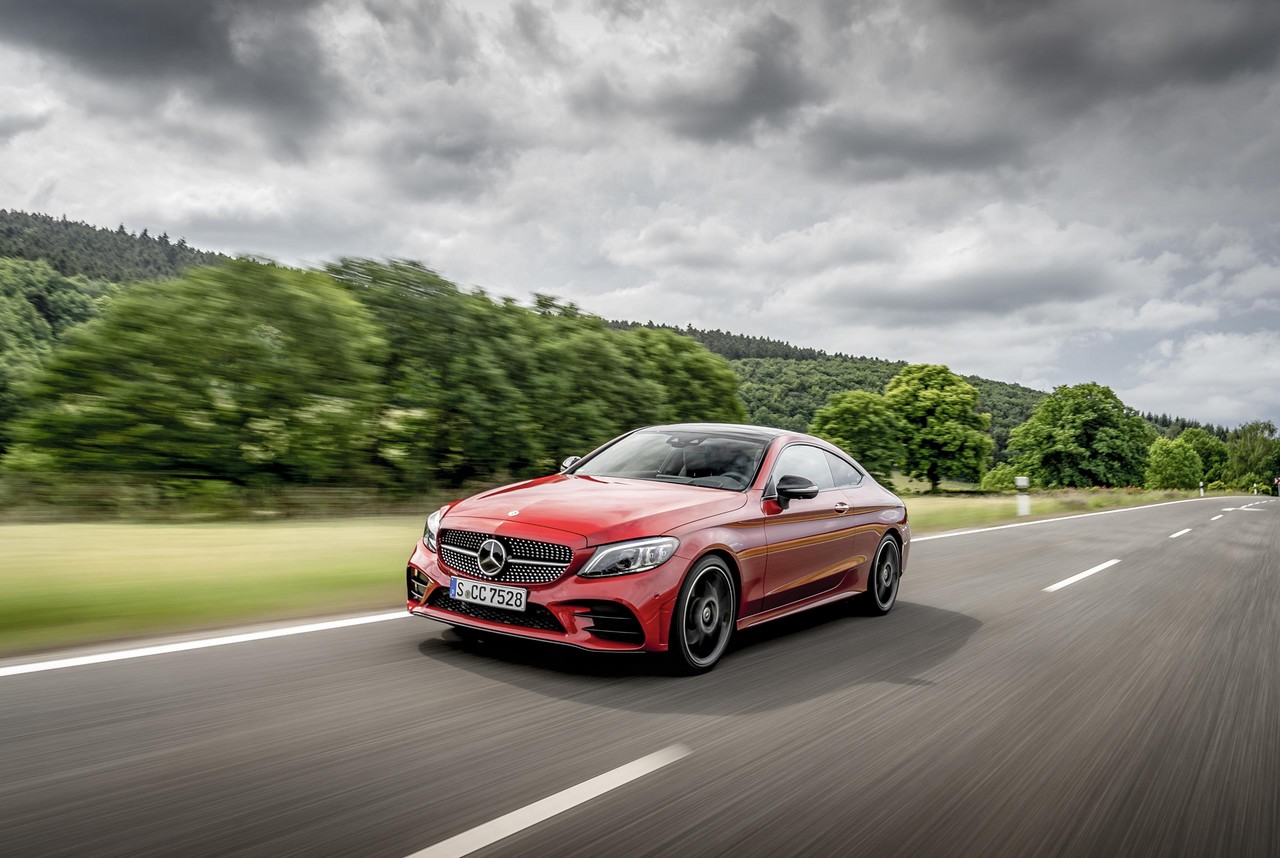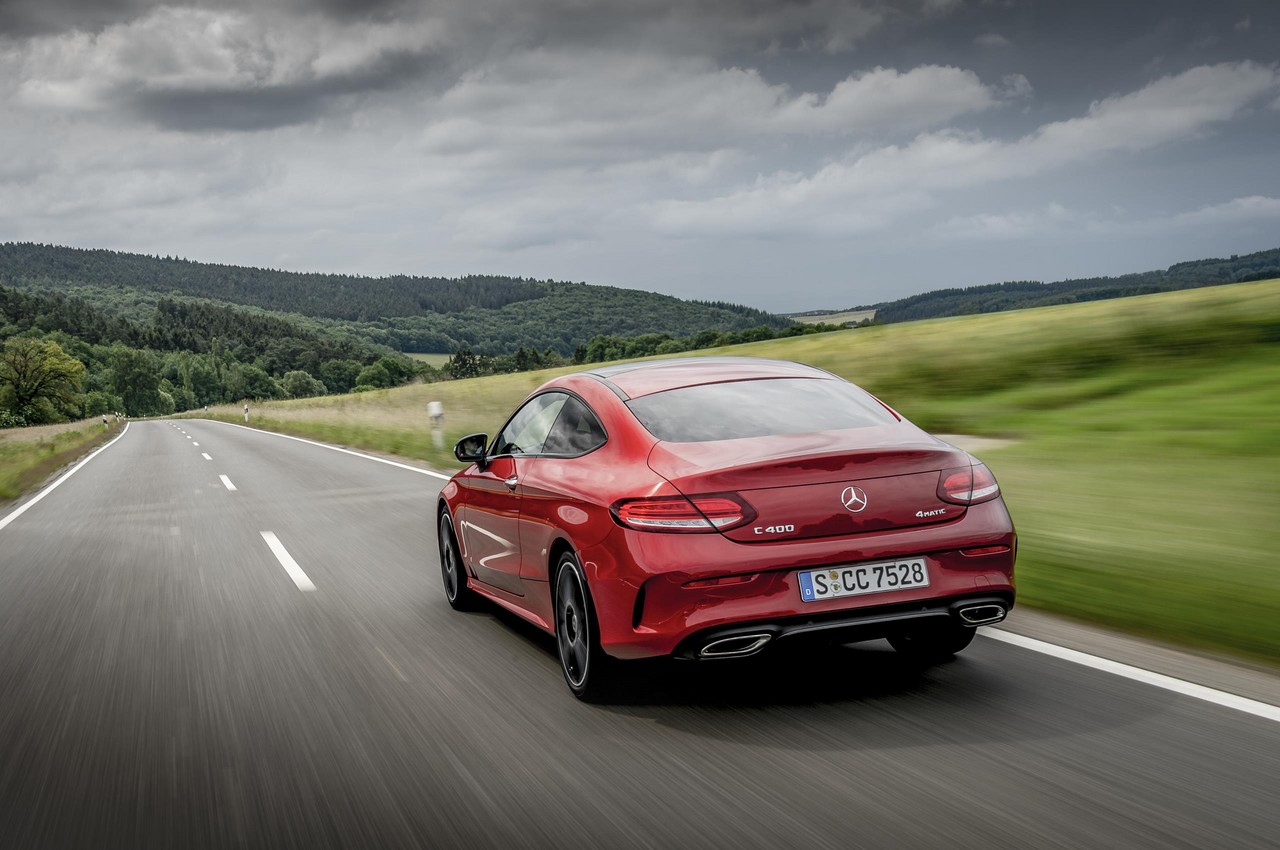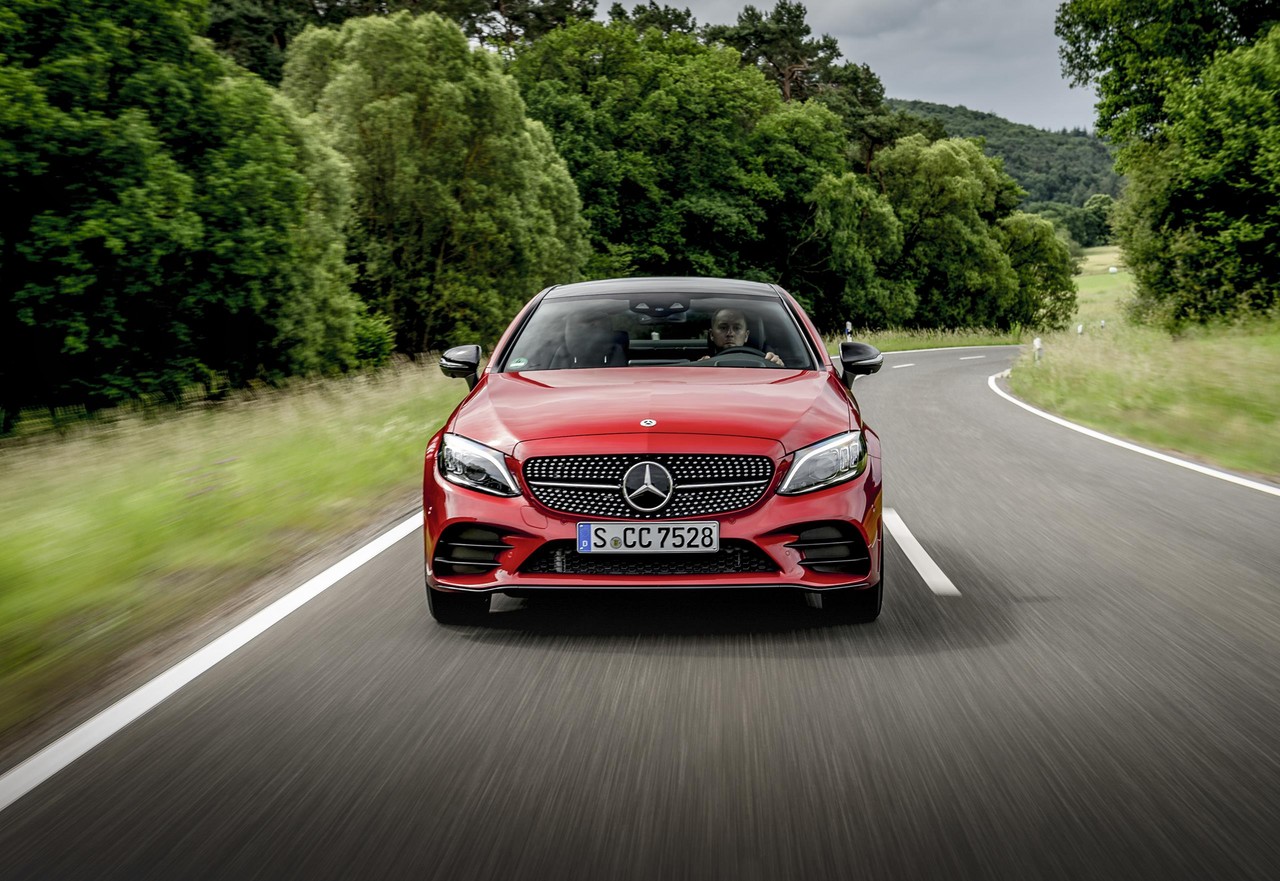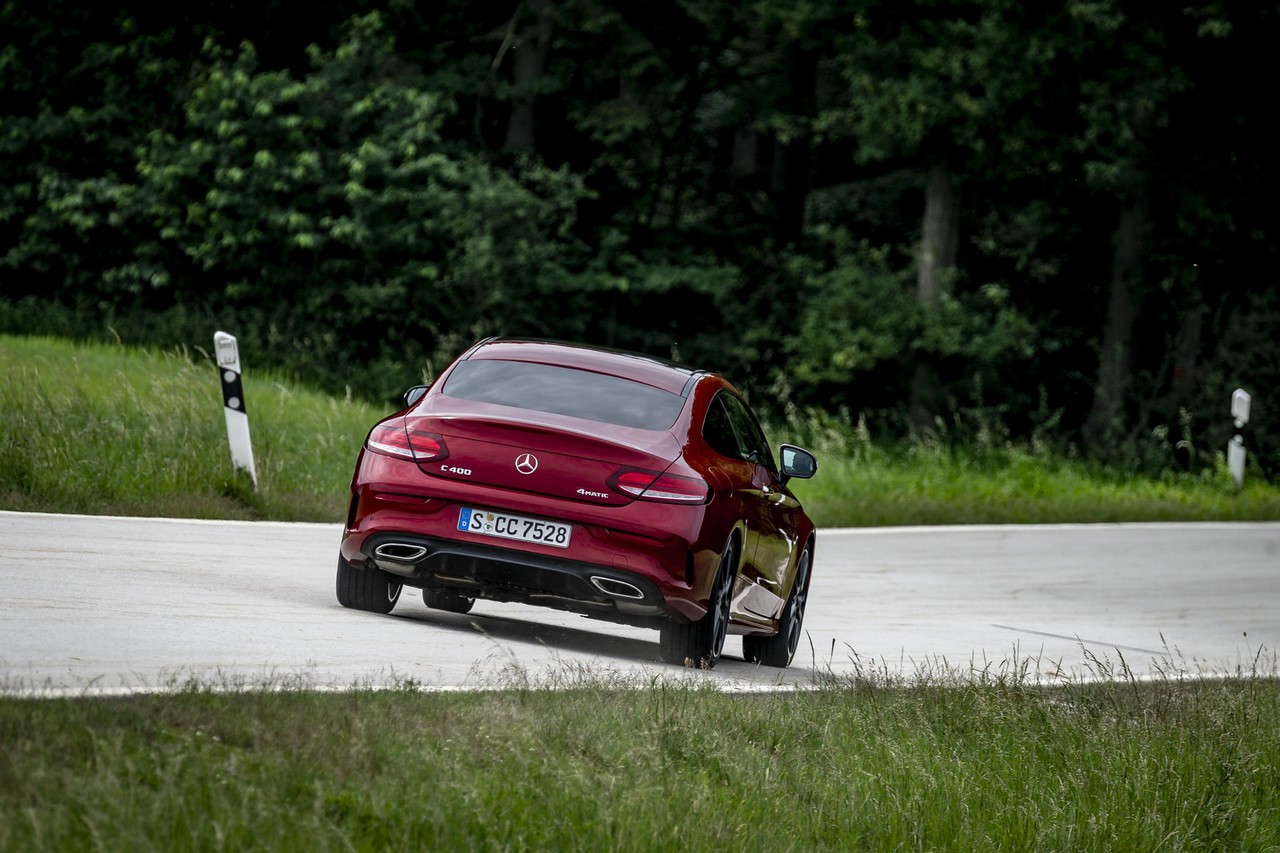
- High standard of interior fit and finish
- Quiet, well-insulated cabin
- Active safety technologies
- Steering is well-weighted…
- … but lacks feel
- Too much body roll in ‘Comfort’ mode, suspension lacks compliance in ‘Sport’ mode
- COMAND controller designed for left-hand drive vehicles
- Poor rear seat head and leg room
- For C 250 d, engine noise when pushed
Review: Mercedes-Benz C205.I C-Class Coupe (2016-18)
Overview
The Mercedes-Benz C205 C-Class Coupe was officially released in Australia in April 2016. Manufactured in Germany, the rear-wheel drive Mercedes-Benz C205 C-Class Coupe range consisted of the C 200, C 250 d and C 300 models (see table below). Please note that the Mercedes-AMG C205 C 63 has been reviewed separately.
| Engine | Trans. | Peak power | Peak torque | |
|---|---|---|---|---|
| C 200 | 2.0-litre turbo petrol I4 (M274) | 7sp auto | 135 kW at 5500 rpm | 300 Nm at 1200-4000 rpm |
| C 250d | 2.1-litre bi-turbo diesel I4 (OM651) | 9sp auto | 150 kW at 3800 rpm | 500 Nm at 1600-3800 rpm |
| C 300 | 2.0-litre turbo petrol I4 (M274) | 7sp auto | 180 kW at 5550 rpm | 370 Nm at 1300-4000 rpm |
Body and dimensions
According to Mercedes-Benz, the C205 C-Class Coupe had a stiffer body than its predecessor though an increased proportion of aluminium – including the wings, bonnet and boot lid – reduced mass. Compared to the C204 C-Class Coupe , the C205 C-Class Coupe was 95 mm longer at (4590 mm), 40 mm wider (1810 mm) and had an 80 mm longer wheelbase (2840 mm). Furthermore, the C205 C-Class Coupe had frameless doors and a drag coefficient of 0.26 Cd.
Suspension and steering
The C205 C-Class Coupe had four-link front and five-link rear suspension, with all shock absorbers mounted on aluminium die-cast components. The C-Class Coupe was offered with two steel suspension systems:
- Comfortable ‘Agility Control’ suspension, an amplitude-selective damping system which utilised 1) a bypass channel in the shock absorber’s piston pin, and 2) a control piston moving within a separate oil chamber. When linear travel of the shock absorber was low, the control piston forced oil through the bypass channel to produce a smaller damping force at the damper valve. For greater shock absorber movements, the control piston moved to close the bypass channel so full damping force was available. To be clear, Agility Control used hydromechanics, not electronics to vary suspension behaviour; and,
- Sports suspension with firmer springs and damping, including Mercedes-Benz’s ‘Sports Direct-Steer’ system for greater agility.
Compared to the W205 C-Class sedan , the suspension of the C-Class Coupe was 15 mm lower.
The optional ‘Airmatic’ air suspension included continuously adjustable damping, self-levelling and variable ride height functions. For the Airmatic suspension, drivers could select from ‘ECO’, ‘Comfort’, ‘Sport’ and ‘Sport +’ and ‘Individual’ drive modes.
The C205 C-Class Coupe had rack-and-pinion steering with electric power assistance.
Safety equipment
Standard safety equipment for the Mercedes-Benz C205 C-Class Coupe included dual front airbags, a driver’s knee airbag, front thorax/pelvis airbags, rear side airbags, full-length curtain airbags, ABS, electronic brake force distribution, brake assist, electronic stability control, traction control, cornering brake control and front seatbelts with pre-tensioners and load limiters.
Further safety technologies, fitted as standard, for the C205 C-Class Coupe included:
- Pre-Safe: in dangerous driving situations, Pre-Safe would prepare the vehicle by tensioning the front seat belts, closing the windows and sunroof (where fitted);
- Collision Prevention Assist Plus (radar-based collision warning with autonomous braking and adaptive Brake Assist): operating at speeds up to 250 km/h to monitor the traffic ahead and at speeds up to 50 km/h for stationary objects, Collision Prevention Assist would issue a visual warning (when driving at speeds over 7 km/h) and an optical warning (when driving at speeds over 30 km/h if there was a collision risk. At speeds below 105 km/h (250 km/h in conjunction with Distronic Plus), Collision Prevention Assist Plus would initially provide partial autonomous braking to reduce vehicle speed and alert the driver. Furthermore, adaptive Brake Assist would calculate the braking force required and prime the braking system for optimum response when the driver depressed the brake pedal. If the driver did not respond and a collision was unavoidable, then maximum braking force would be applied to reduce vehicle speed. At initial vehicle speeds of up to 40 km/h, rear-end collisions could be prevented;
- Blind spot assist (passive): used two radar sensors in the rear of the vehicle to warn the driver before an indicated lane-change if a vehicle was in the driver’s blind spot; and,
- Attention Assist: operated at speeds in excess of 80 km/h and assessed driver behaviour and steering movements for signs of drowsiness; if detected, the driver would be provided with visual and audible warnings.
The Mercedes-Benz C 250 d and C300 were further equipped with Mercedes-Benz’s ‘Driver Assistance Package Plus’ which included:
- Distronic Plus (adaptive cruise control with brake warning): an ‘adaptive’ cruise control system which used two short-range radar sensors positioned behind the front bumper to monitor the road up to 30 metres ahead, and a long-range radar located behind the radiator grille which had a range of 200 metres. Operating at speeds up to 200 km/h, Distronic Plus used an electronic control unit to analyse the information from both radar systems to calculate the engine, automatic transmission and braking parameters required for proximity control. As such, Distronic Plus could automatically apply the brakes to prevent the vehicle from becoming too close to traffic ahead (the time interval could be specified) and accelerate back to the set speed when traffic allowed. To accelerate from rest, the driver only needed to operate the Distronic stalk on the steering column or briefly depress the accelerator pedal. With Distronic Plus, automatic deceleration of up to four (4) m/s2was possible. If Distronic Plus detected that heavier braking was required, a warning light would illuminate in the instrument cluster and be accompanied by an audible warning. Furthermore, the electronic proximity control system could be activated independently of Distronic Plus at speeds over 30 km/h to alert the driver if they were approaching another vehicle too rapidly;
- Steering Assist with Stop&Go Pilot: operating in conjunction with Distronic Plus and at speeds up to 130 km/h, Steering Assist used a stereo camera located behind the windscreen to detect road markings, while the Stop&Go Pilot operated at speeds up to 60 km/h and enabled the system to use the vehicle in front or road markings as a means of orientation. If the vehicle was detected to be drifting out of its lane, Steering Assist would warn the driver and provide steering intervention to keep the vehicle in its lane;
- Pre-Safe Brake with pedestrian detection (autonomous emergency braking): using two 24 GHz sensors behind the front bumper which had a range of 30 metres and a 77 GHz radar which had a range of 200 metres, Pre-Safe Brake operated at speeds between 30 km/h and 200 km/h, and at speeds below 70 km/h if the vehicle was approaching a stationary queue of traffic. Around 2.6 seconds before the anticipated moment of impact, an audible warning would sound and a red warning would appear in the tachometer. Around 1.6 before the calculated impact, the first stage of Pre-Safe Brake would initiate partial braking autonomously with around 40 per cent of the maximum braking power (approximately four (4) m/s2); the Pre-Safe occupant protections system would also be activated. If the driver then applied the brakes, maximum braking force would be made available. If the driver failed to react, Pre-Safe Brake would – in its second stage – initiate autonomous emergency braking (i.e. maximum braking power) around 0.6 seconds before the unavoidable collision to reduce the severity of the impact. The pedestrian recognition function enabled Pre-Safe Brake to detect pedestrians when driving at speeds of up to 50 km/h;
- Pre-Safe Plus: could anticipate potential rear-end collisions and warn following traffic by flashing the rear hazard lights at high frequency. The Pre-Safe Plus system would then deploy occupant protection measures and apply the vehicle’s brakes to prevent secondary accidents;
- BAS Plus with Cross-Traffic Assist: used a 24 GHz radar sensor with a range of 30 metres and a 77 GHz radar sensor with a range of 200 metres to monitor the distance to the vehicle ahead and would warn the driver if there was a risk of a collision. Brake Assist Plus could detect vehicles when travelling at speeds up to 200 km/h, and stationary objects when the driver was travelling at 7 km/h to 72 km/h. Significantly, Brake Assist Plus could calculate the necessary brake force assistance to prevent a rear-end collision, build up that pressure in the braking system and provide it as soon as the brake pedal was depressed for ‘the best possible deceleration’. The Cross-Traffic Assist function could operate at speeds up to 72 km/h and used the stereo camera and radar sensors to detect traffic that was crossing in front of or behind the vehicle. If detected, the driver would receive visual and audible alerts;
- Active Blind Spot Assist: an extension of Blind Sport Assist, Active Blind Spot Assist could apply the brakes on one side of the vehicle to counter-act a driver’s attempt to change lanes when it was not safe to do so; and,
- Active Lane Keeping Assist: could detect when the adjacent lane was occupied (including oncoming traffic) and prevent the driver from inadvertently exiting from the lane when it was not safe to do so by applying a corrective braking force to the wheels on one side of the vehicle.
Features: Mercedes-Benz C205 C 200 Coupe
Standard features for the Mercedes-Benz C205 C 200 Coupe included 18-inch five-spoke AMG alloy wheels, an ‘Audio 20’ multimedia system with a seven-inch TFT colour display, a Garmin ‘Map Pilot’ navigation system, a five speaker sound system, digital radio tuner (DAB+), CD player with MP3/WMA/AAC compatibility, media interface with two USB ports and iPod/iPhone integration, Bluetooth mobile phone connectivity and audio streaming, ‘Artico’ synthetic leather upholstery, power adjustable front sports seats, ‘Thermatic’ dual-zone climate control air conditioning, cruise control with ‘Speedtronic’ variable speed limiter, LED headlights with Headlamp Assist, integrated LED daytime running lights, dusk-sensing headlights, rain-sensing wipers, front and rear parking sensors (‘Parktronic’), a leather-wrapped steering wheel with gearshift paddles, 40:20:40 split and folding second row seats, remote central locking, power adjustable and heated door mirrors with folding function, power windows, a height and reach adjustable steering wheel, push-button start, driver memory settings (for seat and mirror positions), ambient lighting, illuminated door sill panels, AMG floor mats, AMG sports pedals, a trip computer and an immobiliser.
As standard, the C 200 was also fitted with:
- Active Parking Assist: could identify parallel and right angle parking spaces – at speeds of up to 35 km/h – and automatically steer the vehicle into the space while the driver controlled vehicle speed; and,
- A 360 degree camera system which could show the C-Class Coupe and its surroundings from different perspectives.
Features: C 250 d Coupe
Compared to the C 200, the C 250 d Coupe was further equipped with 19-inch fourteen-spoke AMG alloy wheels, leather upholstery, proximity key (i.e. keyless entry), automatic powered boot closing and rear privacy glass.
Features: C 300 Coupe
The range-topping C 300 Coupe was distinguished by its 590 watt Burmester surround sound system with thirteen speakers and a nine channel DSP (digital sound processing) amplifier, COMAND Online with 21.3 cm TFT colour display, HDD navigation system with traffic messaging channel, a CD/DVD player, 10 GB music register, Bluetooth interface, ‘Linguatronic’ voice activation and internet access.
Brochure and specifications
- Brochure: Mercedes-Benz C205 C-Class Coupe (February 2016)
- Specifications: Mercedes-Benz C205 C-Class Coupe (February 2016)
Related links
Review: Mercedes-Benz C205.II C-Class Coupe (2018-23)
Overview
Released in Australia in August 2018, the Mercedes-Benz C205.II C-Class Coupe introduced a revised range that initially consisted of C 200 EQ Boost models, with the C 300 following in October 2018.
The Mercedes-Benz C205.II C-Class introduced a new ‘electronic architecture’. For the C 200 EQ Boost, this electronic architecture enabled it to have an additional 48 volt onboard network and a belt-driven starter/alternator for fast restarts and low vibrations. Furthermore, ‘EQ Boost’ provided the following functions:
- When accelerating, EQ Boost could assist the engine with an additional 10 kW until the turbocharger accumulated full charge pressure;
- The EQ Boost function would also assist the engine to reach its ideal operating speed as quickly as possible during gearshifts to reduce shift times;
- During deceleration, the starter/alternator would recuperate kinetic energy and charges the battery;
- The water pump was electrically driven and actuated by a characteristic map to adapt cooling output according to need; and,
- Below a certain speed, a ‘glide mode’ would decouple the engine from the drivetrain to avoid engine braking and the engine would switch off to reduce fuel consumption.
Visually, the Mercedes-Benz C205.II C-Class Coupe could be identified by its redesigned front bumper, AMG bodystyling with diamond radiator grille and front and rear lamps were ‘defined by clear-lined contours’.
| Engine | Trans. | Peak power | Peak torque | |
|---|---|---|---|---|
| C 200 EQ Boost | 1497 cc M264 turbo petrol I4 | 9sp auto | 135 kW at 5800-6100 rpm, plus 10 kW EQ Boost | 280 Nm at 3000-4000 rpm |
| C 300 | 1991 cc M264 turbo petrol I4 | 9sp auto | 190 kW at 5500 rpm | 370 Nm at 1800-4000 rpm |
Safety equipment
The Mercedes-Benz C205.II C-Class introduced improved camera and radar systems. For example,
- The forward-facing camera had a maximum range of 500 metres, including 90 metres in 3D; and,
- The vehicle’s surroundings would be scanned by radar across a distance of up to 250 metres to the front, 40 metres to the sides and 80 metres to the rear.
For the C205.II C-Class Coupe, ‘Collision Prevention Assist Plus’ was effectively renamed ‘Active Brake Assist’.
Features: C 200 EQ Boost and C 300 Coupe
For Australian-delivered Mercedes-Benz C205.II C-Class Coupes, standard features were extended to include:
- A 12.3-inch (1920 x 720 pixel) fully digital instrument display;
- A 10.25-inch (1920 x 720 pixel) central display for the Audio 20 infotainment system (previously seven-inch);
- An SD card navigation system (replacing the Garmin Map Pilot navigation system);
- Apple CarPlay and Android Auto smartphone integration; and,
- Touch-sensitive steering wheel controls.
For a complete list of features for the Mercedes-Benz C205.II C 200 EQ Boost and C 300, please refer to ‘Specifications’, below.
Specifications
